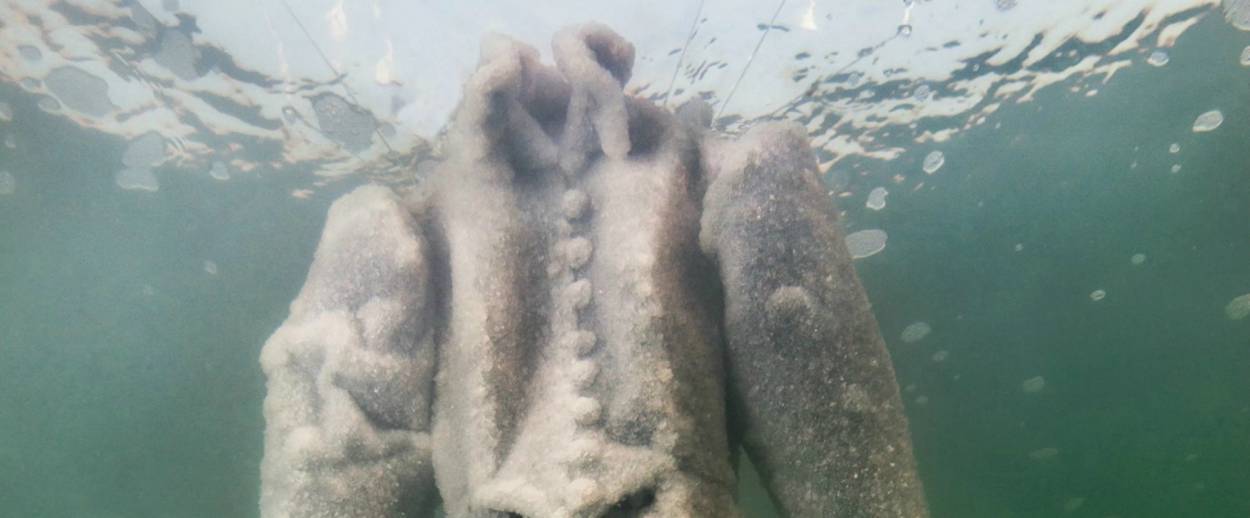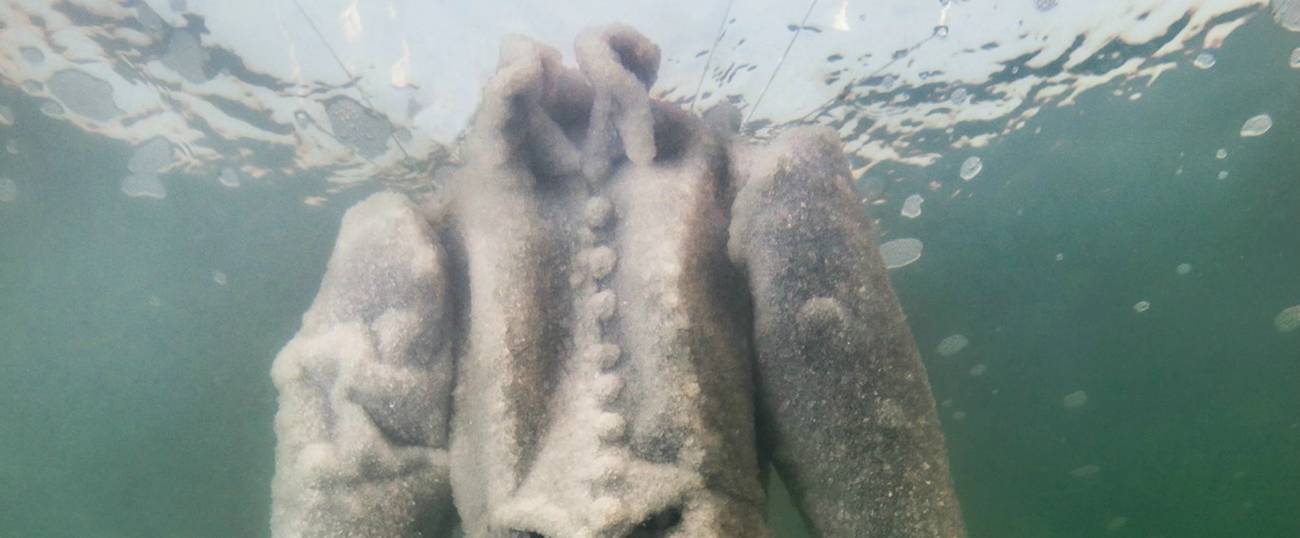An Israeli Artist Submerged a Black Gown in the Dead Sea for Two Years
Sigalit Landau’s ‘Salt Bride,’ inspired by S. Ansky’s ‘The Dybbuk,’ is on display at London’s Marlborough Contemporary




On display at a London gallery through Sept. 3 is a project by Israeli artist Sigalit Landau called “Salt Bride,” consisting of eight images that document the material transformation of a dress submerged in the Dead Sea for two years. The dress is supposed to resemble the costume worn by Leah, a young bride possessed by an evil spirit in S. Ansky’s play The Dybbuk, which made it onto Tablet’s list of 101 Greatest Jewish Books.
According to the show’s press release, “Leah’s black garb is transformed underwater as salt crystals gradually adhere to the fabric. Over time, the sea’s alchemy transforms the plain garment from a symbol associated with death and madness into the wedding dress it was always intended to be.”
Said Landau, who grew up in Jerusalem and represented Israel at the 54th Biennale in Venice: “[The Dead Sea] is like meeting with a different time system, a different logic, another planet.”
You can view the transformation here. Warning: It’s rad, just like Laundau’s other “salt” works.
Previous: ‘The Dybbuk,’ S. Ansky (1914)
Haunted Dybbuk Boxes For Sale
Related: The Man Who Mistook Himself for a Dybbuk
Jonathan Zalman is a writer and teacher based in Brooklyn.